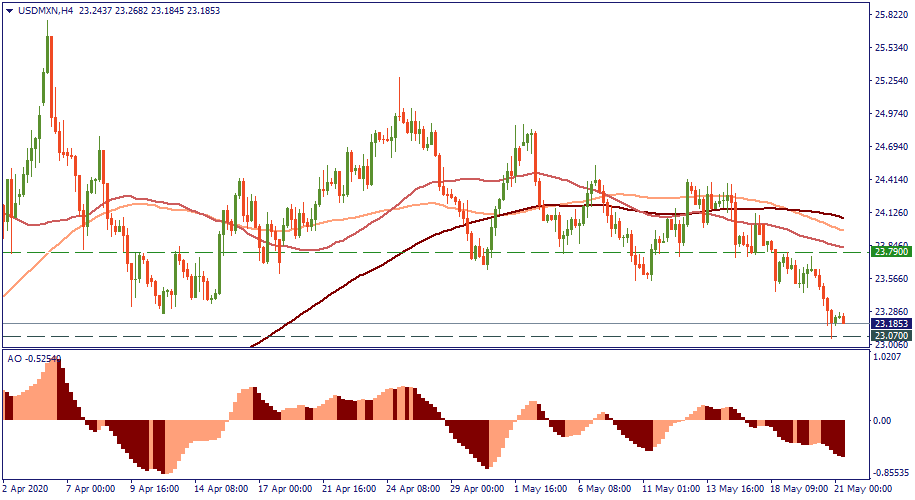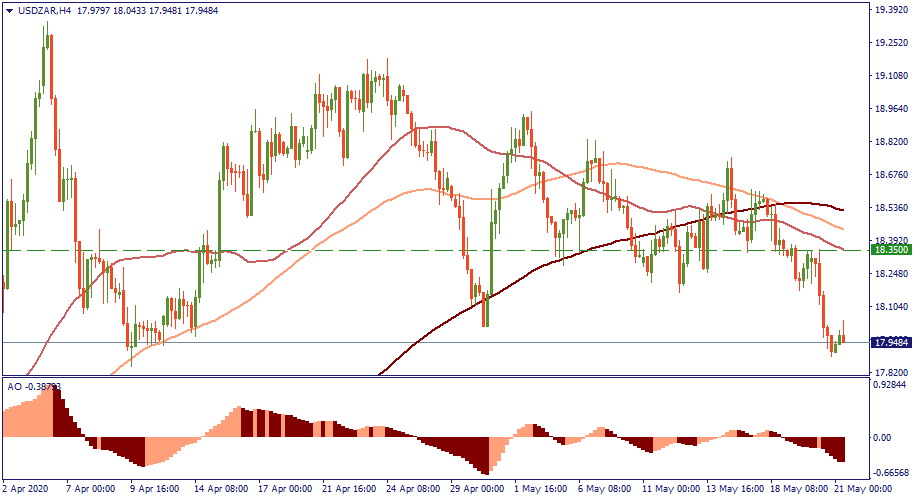
I know we've had quite an amazing run these past few month, with over 78% accuracy in our trade ideas and sentiments, and thousands of pips in profits monthly...

Don’t waste your time – keep track of how NFP affects the US dollar!
Data Collection Notice
We maintain a record of your data to run this website. By clicking the button, you agree to our Privacy Policy.

Beginner Forex Book
Your ultimate guide through the world of trading.
Check Your Inbox!
In our email, you will find the Forex 101 book. Just tap the button to get it!
Risk warning: ᏟᖴᎠs are complex instruments and come with a high risk of losing money rapidly due to leverage.
71.43% of retail investor accounts lose money when trading ᏟᖴᎠs with this provider.
You should consider whether you understand how ᏟᖴᎠs work and whether you can afford to take the high risk of losing your money.
Information is not investment advice
On the H4 chart of the USD/MXN, the USD lost its value to drop below the Moving Averages. It trades slightly above the tactical support of 23.07 and appears to be going in consolidation at that level.

The picture with the USD/ZAR is almost identical: the price drops below the Moving Averages, which are grouped now above the resistance of 18.35 and configured in descending order, and is approaching the local support.

The question is: what happens next? Technically, the price will likely bounce upwards from the support level with which it is flirting now for both currencies. The Awesome Oscillator supports that reasoning because it is bottoming out at a pretty low level compared to the previous drops. That hints that further decline is more unlikely than not.
Therefore, prepare to buy while the USD is hesitating to come back at the MXN and ZAR with another bullish onslaught.
However, it is just a technical view; let’s check with the fundamentals
The Mexican peso and the South African rand just have two very similar movement pattern in relation to the US dollar, but they are not the only currencies from the developed world which see the local devaluing of the USD. If you look at the Brazilian real and the Turkish lira, these would also show are a local drop of the greenback, although overshadowed by a larger (and an ever-continuing) upward trajectory. That means that all these currencies share similar characteristics and are affected by similar factors in relation to the USD.
The main factor is the strength of the USD as the prime emblem and functional element of the strongest economy in the world - hence the inherent decline in the relative value of the MXN and ZAR, followed by the TRY and BRL against the USD. The fact that the Mexican peso and the South African rand show similarity in how they move against the greenback merely means that Mexico and South Africa have similar economic strength against the US economy while, for example, Turkey and Brazil have less to say against the USD because their economies are not as robust.
Second, these currencies, being exotic and hence enjoying a significantly lower demand are much less exposed to the results of the economic actions of their own governments as they are to those of the United States. That is, the behavior of the USD/MXN and USD/ZAR is almost entirely dictated by the state of the USD alone, making the MXN and ZAR in their own sense quite irrelevant to what we see on the chart. In a nutshell, with the exotic currencies, the USD dictates almost 90% of what is happening.

I know we've had quite an amazing run these past few month, with over 78% accuracy in our trade ideas and sentiments, and thousands of pips in profits monthly...

Futures for Canada's main stock index rose on Monday, following positive global markets and gains in crude oil prices. First Citizens BancShares Inc's announcement of purchasing the loans and deposits of failed Silicon Valley Bank also boosted investor confidence in the global financial system...

Investor confidence in the global financial system has been shaken by the collapse of Silicon Valley Bank and Credit Suisse. As a result, many are turning to bearer assets, such as gold and bitcoin, to store value outside of the system without...

eurusd-is-falling-what-to-expect-from-the-future-price-movement

Greetings, fellow forex traders! Exciting news for those with an eye on the Australian market - the upcoming interest rate decision could be good news for Aussies looking to refinance or take out new loans. The Mortgage and Finance Association Australia CEO, Anja Pannek, has...

Hold onto your hats, folks! The Japanese yen took a nosedive after the Bank of Japan (BOJ) left its ultra-loose policy settings unchanged, including its closely watched yield curve control (YCC) policy. But wait, there's more! The BOJ also removed its forward guidance, which had previously pledged to keep interest rates at current or lower levels. So, what's the scoop? Market expectations had been subdued going into the meeting, but some were still hoping for tweaks to the forward guidance to prepare for an eventual exit from the bank's massive stimulus
Your request is accepted.
We will call you at the time interval that you chose
Next callback request for this phone number will be available in 00:30:00
If you have an urgent issue please contact us via
Live chat
Internal error. Please try again later